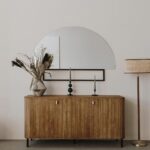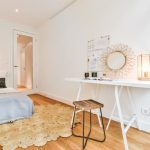Is grey going out of style in home decor? For years, grey has been the reigning color in home design, dominating everything from wall paint to furniture and accessories. Its neutral and versatile appeal has made it a go-to choice for modern and minimalist spaces. But as with any trend, its popularity may be on the decline as new color options emerge in the world of home decor.
The psychology of grey is an important aspect to consider when discussing its popularity. Its ability to evoke feelings of calmness, sophistication, and modernity has made it a staple in interior design. However, as trends in home decor continue to evolve, new colors are beginning to take center stage.
In today’s ever-changing landscape of home design, it’s important to stay updated on what’s currently in style. Factors such as cultural shifts, societal influences, and emerging design trends all play a role in shaping the preferences of homeowners and interior designers alike. As we explore these factors, it becomes clear that the reign of grey may be challenged by alternative color options for a modern home.
The Psychology of Grey
Grey has been a dominant color in home decor for several years. Its popularity can be attributed to its versatility and calming effect. Grey is often associated with neutrality, balance, and sophistication, making it an ideal choice for many homeowners. In terms of psychology, grey is considered a practical and timeless color that evokes feelings of composure and tranquility.
In interior design, the use of grey creates a sense of balance and stability. It serves as an excellent backdrop for other accent colors and allows different textures and materials in a space to stand out. Additionally, the various shades of grey provide endless possibilities for creating a modern and elegant atmosphere in any room.
From a psychological standpoint, grey is also believed to have a soothing effect on individuals. It can promote feelings of relaxation and calmness, which are essential in creating a comfortable living environment. Homeowners often choose grey for their walls, furniture, and accessories to achieve a peaceful and serene ambiance in their homes.
| Psychological Effect | Impact on Decor |
|---|---|
| Elicits feelings of composure and tranquility | Serves as a backdrop for accent colors |
| Promotes relaxation and calmness | Allows different textures/materials to stand out |
Trends in Home Decor
The current trends in home decor are constantly evolving to reflect the changing tastes and preferences of homeowners. In recent years, there has been a noticeable shift away from the dominance of grey in home design. While grey had its moment as the go-to color for modern interiors, there is now a growing interest in bolder and more vibrant hues.
One of the emerging trends in home decor is the use of earthy and natural tones such as terracotta, olive green, and warm ochre. These colors evoke a sense of connection to nature and bring a comforting and grounding atmosphere to any space. Additionally, jewel tones like emerald green, sapphire blue, and amethyst are gaining popularity for adding an air of luxury and sophistication to interiors.
In addition to rich and earthy colors, pastel shades are also making a comeback in home decor. Soft pinks, powdery blues, and muted yellows are being used to create calming and serene environments that promote relaxation and tranquility. These gentle hues are ideal for creating a soothing ambiance in bedrooms, living rooms, or any area where comfort is paramount.
| Trend | Description |
|---|---|
| Earthy Tones | Colors such as terracotta, olive green, and warm ochre bring a comforting and grounding atmosphere to any space. |
| Jewel Tones | Emerald green, sapphire blue, and amethyst add an air of luxury and sophistication to interiors. |
| Pastel Shades | Soft pinks, powdery blues, and muted yellows create calming environments that promote relaxation. |
Factors Contributing to Grey’s Decline in Popularity
Over Saturation in the Market
In recent years, grey has been the go-to color for home decor, with it being used for walls, furniture, and accessories. However, this over saturation in the market has led to a decline in its popularity. Consumers are now seeking something unique and different, causing them to move away from the once ubiquitous grey color palette.
Desire for More Vibrant Spaces
With the increase in time spent at home, many people have found themselves craving more vibrant spaces that evoke feelings of joy and positivity. This desire for a lively environment has contributed to the decline of grey in home decor as people seek out bolder and more colorful options for their living spaces.
Influence of Nature and Biophilic Design
As the trend of biophilic design continues to gain momentum, there has been a shift towards incorporating natural elements and earthy tones into home decor. This growing influence of nature has steered homeowners away from using cold and industrial grey hues, and towards warmer tones inspired by the outdoors.
As these factors continue to shape preferences in home decor, it’s evident that the reign of grey is slowly coming to an end. However, this doesn’t mean that grey will completely disappear from interior design. Instead, it may take on a supporting role while other colors take center stage.
Alternative Color Options for a Modern Home
When it comes to choosing a color palette for your home, it’s important to consider the current trends in home decor. While grey has been reigning supreme in recent years, there is now a shift towards alternative color options for a modern home. Here are some trendy and stylish alternatives to the ever-popular grey:
- Navy Blue: This deep, rich color can add a sense of sophistication and luxury to any space. Consider using navy blue as an accent wall or in furniture pieces for a bold statement.
- Blush Pink: Soft and romantic, blush pink is a popular choice for those looking to add a touch of femininity to their home. It pairs well with neutral tones and metallic accents for a modern look.
- Olive Green: A versatile and earthy color, olive green brings a natural and calming feel to any room. Whether used on walls or in decor accessories, this color adds depth and warmth to your space.
As the trend towards warm, earthy colors continues to gain momentum, it’s also worth considering shades like terracotta, rust, and mustard yellow as alternative options for adding warmth and personality to your modern home.
When considering alternative colors for your home decor, it’s important to remember that personal preference plays a significant role in creating a space that reflects your individual style. Don’t be afraid to experiment with different colors and combinations until you find the perfect palette that feels right for you and your home.
Rejuvenating Your Space
When grey was reigning supreme in home decor, many homeowners embraced the cool, neutral color for its versatility and modern appeal. However, as trends in home decor continually evolve, there has been a shift towards incorporating pops of color into grey palettes to add warmth and personality to living spaces.
Understanding the Power of Color
Color psychology plays a crucial role in interior design, as different hues can evoke various emotions and create distinct moods within a space. When adding pops of color to a grey palette, it’s essential to consider the ambiance you want to achieve. For example, incorporating warm tones like vibrant oranges or rich reds can bring energy and vitality to a room, while cool tones such as calming blues or lush greens can promote relaxation and tranquility.
Introducing Accents and Accessories
One way to infuse color into a predominantly grey space is through the strategic use of accents and accessories. Bold throw pillows, statement artwork, decorative vases, or colorful area rugs can instantly enliven a room and create visual interest against the backdrop of grey walls or furniture. By carefully selecting these accent pieces, homeowners can experiment with different colors and easily change them out as their style preferences evolve.
Embracing Nature With Greenery
In addition to introducing colorful accents, incorporating natural elements such as plants and flowers is an effective way to add pops of color to a grey palette. Lush greenery not only brings life and freshness into a space but also introduces vibrant shades of green that complement the neutrality of grey. Whether through potted plants, botanical prints, or floral arrangements, nature-inspired elements can breathe new life into an otherwise monochromatic setting.
The Timeless Appeal of Grey
Grey has been a dominant feature in home decor for years, and its popularity seems to be waning. However, despite this decline in popularity, grey will always have a place in home decor. There are several reasons why this color will remain a timeless choice for interior design.
First and foremost, grey is an incredibly versatile color that can work well with almost any other hue. Whether you prefer bold, vibrant colors or more muted tones, grey can serve as the perfect backdrop for your preferred aesthetic. Its neutral and understated nature allows it to adapt seamlessly to different design styles and preferences.
Another reason for the timeless appeal of grey is its ability to create a sense of calm and sophistication in any space. This soothing quality makes it an ideal choice for bedrooms, living rooms, and other areas where relaxation is key. Additionally, grey can add a touch of elegance to a room when paired with the right accents and furnishings.
Lastly, grey’s enduring appeal can be attributed to its ability to withstand changing trends. While certain shades of grey may fall in and out of fashion, the overall concept of using this color as a base for interior design is unlikely to become outdated anytime soon. Its classic look ensures that it will continue to be embraced by homeowners and designers alike for years to come.
- Grey’s versatility makes it suitable for various design styles
- The calming effect of grey contributes to its timeless appeal
- Grey’s enduring nature allows it to withstand changing trends
Final Thoughts
In conclusion, the trend of using grey in home decor has certainly seen a decline in popularity, but that doesn’t mean it’s completely going out of style. While other colors may be trending at the moment, grey still offers a timeless appeal and will always have a place in home decor.
It’s important to remember that personal preferences play a significant role in how we decorate our homes, and embracing change is also essential as trends come and go.
As we navigate through the world of home decor, it’s important to keep in mind that individual tastes and preferences should always take precedence. Whether it’s opting for a classic grey color scheme or choosing to experiment with different hues, the ultimate goal is to create a space that reflects your personality and style. After all, home is where we should feel most comfortable and at peace.
In the end, while trends may come and go, what truly matters is creating a space that brings joy and contentment. So whether you choose to stick with the timeless appeal of grey or explore other color options for your modern home, what’s most important is that your living space feels like a true reflection of who you are.
Embracing change while staying true to personal preferences is the key to achieving a home decor style that you’ll love for years to come.
Frequently Asked Questions
What Color Is Replacing Gray for Decorating?
Warm neutral colors like beige and taupe are replacing gray for decorating. These earthy tones create a cozy and inviting atmosphere, giving rooms a more relaxed and natural feel.
Is Grey on Its Way Out in Home Decor?
While gray has been a popular choice in home decor for many years, it’s not necessarily on its way out. Instead, it’s taking a backseat to warmer neutral colors like beige and taupe. Gray can still be used as an accent color or paired with other shades to add depth to a room’s color palette.
What Is the Next Colour Trend After Grey?
The next color trend after grey seems to be leaning towards warmer and earthier tones like terracotta, olive green, and mustard yellow. These colors bring warmth and character into spaces, providing a welcoming and sophisticated vibe to interior design schemes.

I’m thrilled to be your companion on this exciting journey through the world of home decor and design. With a passion for turning houses into homes and a keen eye for the finer details, I’m here to help you transform your living spaces into beautiful, functional, and meaningful havens.





